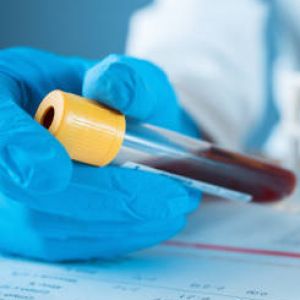Progress Made Toward NASH Diagnosis and Drug DiscoveryPosted by Vivian creative on February 22nd, 2022 A buildup of fat in the liver could cause an aggressive type of nonalcoholic fatty liver disease (NAFLD), called nonalcoholic steatohepatitis (NASH) which is a condition with liver inflammation and damage. Most of the time, it causes no symptoms and no problems, while in some worse cases, the fat causes inflammation and damages liver cells, affecting the normal function of the liver or even leading to cirrhosis. Though the second leading indication for liver transplantation in the United States, NASH has no FDA-approved treatments currently. This is drawing concerns from all stakeholders, including patients and providers, for which experts call for a great deal of focus on understanding and addressing this important liver disease that impacts clinical outcomes and the quality of life. Diagnosis of NASH Because NASH are asymptomatic until patients are identified at advanced stages, a liver biopsy remains the gold standard for making early predictive and definitive NASH diagnosis and staging. However, the liver biopsy is an invasive procedure that has several drawbacks, including sampling error, high expense, side effects like pain and bleeding, and the impracticability of performing liver biopsies on all NASH patients. All these unfavorable factors are prompting the technology for developing reliable, precise, and noninvasive NASH diagnostic approaches. Biomarkers, as noninvasive and reliable alternatives to liver biopsy, contribute to the early diagnosis of NASH by indicating biological characteristics in a normal or pathologic process. Conventional NASH biomarkers like liver enzymes have different drawbacks. And currently, it\'s not possible to identify fibrosis and steatosis, to early diagnose NASH, or to predict the disease progression with one biomarker alone single test. There are many novel noninvasive tests are in development, and multi-omics biomarkers, including those focusing on microbiota, seem to be promising if only combinatorial methods were standardized and implemented. Treatment of NASH
Though no pharmacologic therapy has been approved to treat NASH and clinical advice on treating this disease is more about lifestyle modification based on body weight and exercise, the NASH therapeutic pipeline is robust. As a matter of fact, there are approximately dozens of projects for NASH drug development with different mechanisms. They are being investigated in various phases of drug development, some of which undoubtedly would come across setbacks but numerous drugs still are showing great promise for the potential to treat NASH. With different endpoints like a histological improvement, NASH resolution, prevention of progression to cirrhosis, and fibrosis stage regression, some NASH drugs are expected to be approved on the basis of relatively short-term studies. However, it\'s also pointed out that in the race of developing medical treatment of NASH, lifestyle modification is still the most effective treatment currently available for NASH patients. Researchers have a positive attitude toward the future of NASH drug approval and look forward to receiving approval for at least one additional serum biomarker in recent years. Also, as NASH is a complex and multiorgan disease involving different mechanisms of action, experts indicated that it would be beneficial to have several approved drugs to tailor different treatments for different patients. Like it? Share it!More by this author |


